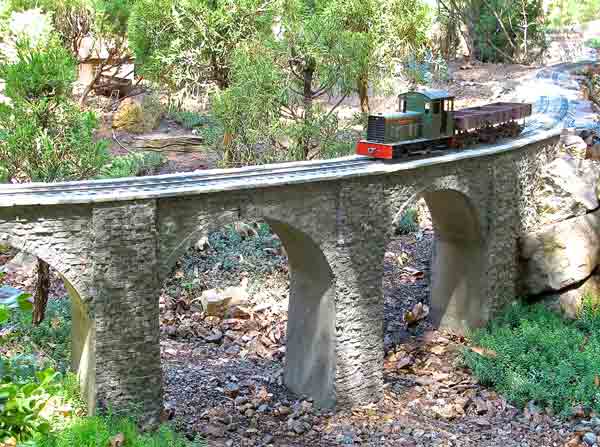
1. Gary Broeder’s almost-finished Roman arch bridge has evolved through several phases, yet the bridge has been operational for well over a year. Juniper trees (Juniperus sp.) and sedum groundcover, mulched with sharp gravel and pebbles, create an easy-care landscape and hardscape. The piers, arch stones, and cap stand out for a more three-dimensional face. […]
Read More…
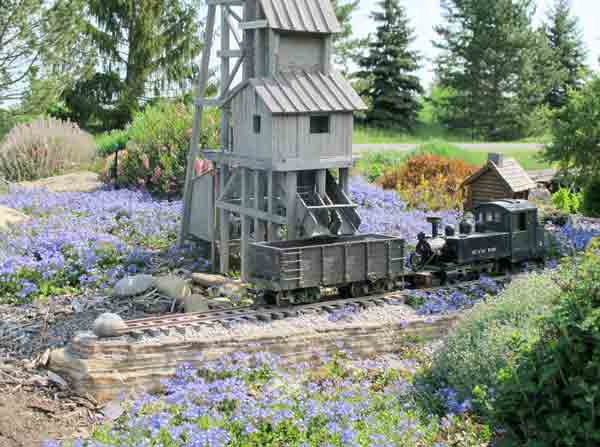
1. The hillside around the Skunk Holler Mine on the author’s Hoot ’n’ Holler Railroad is covered with Turkish veronica, which bursts into bloom every spring. Don Parker 2. The lighter-blue flowers in the foreground are produced by miniature speedwell (Veronica oltensis), growing shorter than Turkish veronica. Don Parker 3. Three different groundcovers flank this […]
Read More…
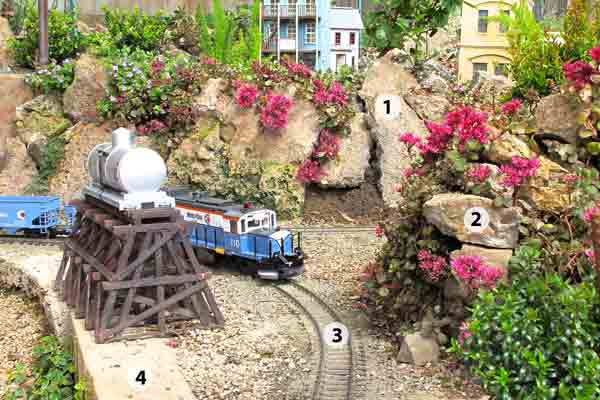
1. Edward Van Pelt’s small yard in hilly San Francisco required retrofitting by reusing the underside of walkways as new hardscape. Stacked, recycled concrete (also from on site) forms the hill on the right. Planted with pink-flowering red stonecrop (Sedum spurium ‘Dragon’s Blood’ Zones 3-9), elevated terraces resist erosion from earthquakes and four dogs. In […]
Read More…
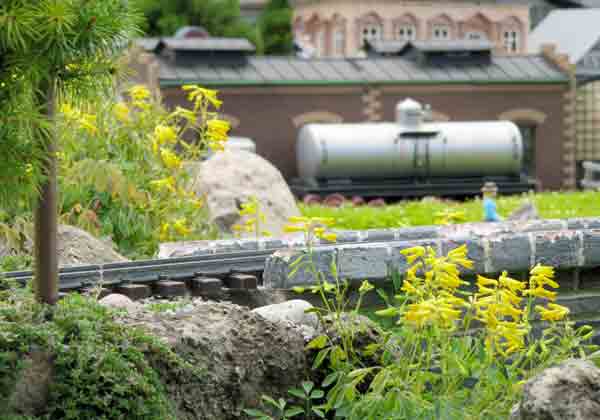
Nancy Norris Common names: False bleeding heart, Yellow corydalis, Yellow fumitory Latin name: Corydalis lutea Plant type: Perennial USDA Hardiness Zones: 4-8 Cultural needs: Moist, well drained, mildly acid or mildly alkaline soil; shade to part shade Plant size: 6-12″ Native to the southern Alps of Europe, yellow corydalis (kor-ID-ah-liss) sports tubular, spurred flowers on […]
Read More…
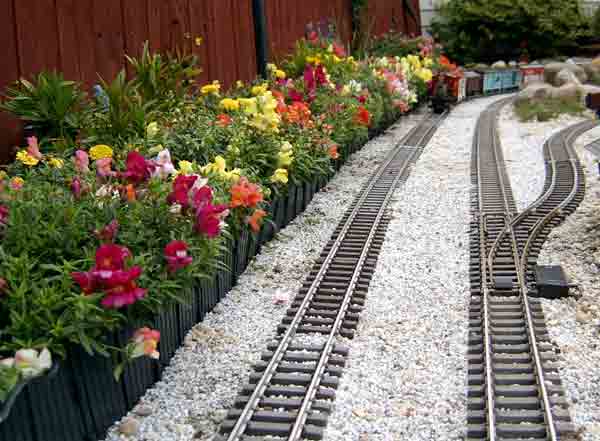
1. A spectacular display of annual flowers edges the mainline of Ned and Phyllis Ruetz’s Rock Canyon Garden Railroad in Michigan. Don Parker 2. White sweet alyssum blooms profusely on the right of a clump of blue lobelia on Tom Speer’s Hard Rock & Dynamite Railroad in Denver. Don Parker 3. What appears to be […]
Read More…
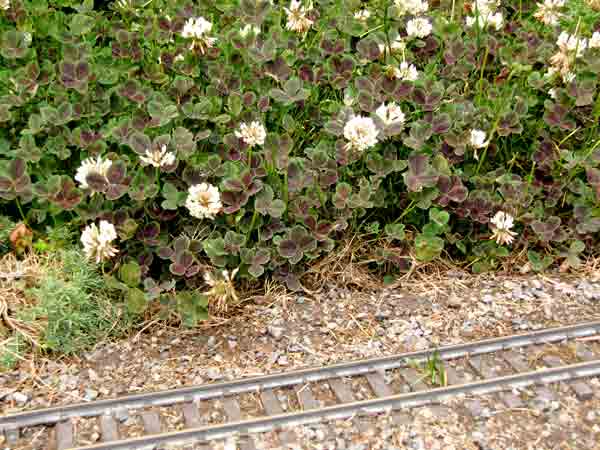
Nancy Norris Common name: Black-leaved clover Latin name: Trifolium repens ‘Atropurpureum’ Plant type: Groundcover USDA Hardiness Zones: 4-10 Cultural needs: Well drained, moist soil; sun to shade Plant size: 3-6″ high by 12″ wide White clover is native to every US State and almost all Canadian provinces. This portrait shows a selection of the common […]
Read More…
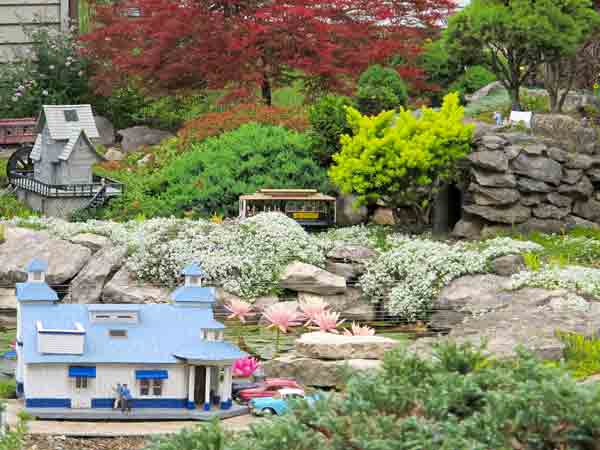
To elevate or not to elevate? That is the question we address while deciding on a style for our garden railway. Proponents of the “box” style like to raise the trains closer to view and say they don’t have to bend over so much, but it may surprise you to know that plenty of folks […]
Read More…

1. From the edge of the railway, red kangaroo paws (Anigozanthos ‘Dwarf Delight’, Zones 9-11) wave furry red fingers at trains from multi-branched stems all summer. Frank and Ruby Andrews planted these Aussie imports lower than the track to frame their Maple Rock Railway as trains pass. The plants’ frost-sensitive basal leaves may require mulching […]
Read More…
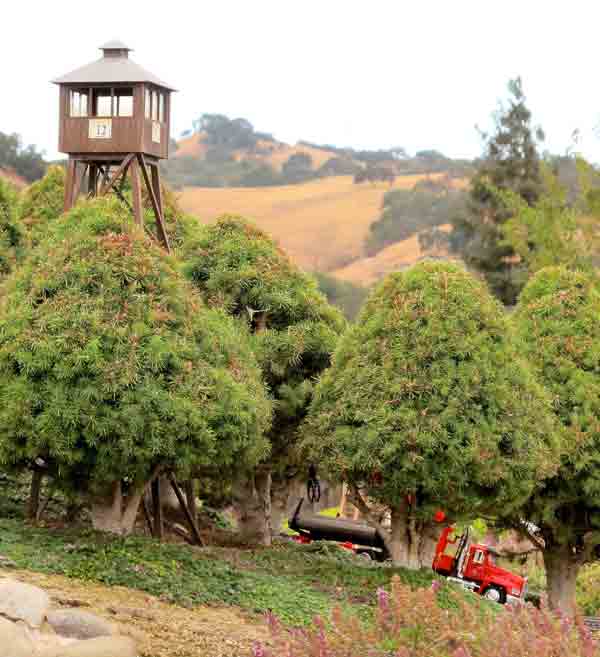
Our little scale trees really make or break the scale quality of our railway gardens. Did you know you could choose from several methods of keeping trees in scale? Here are three practices, but we’ll focus on the third. One approach, planting genetically miniature* plants, ensures almost no pruning for quite a long time but […]
Read More…
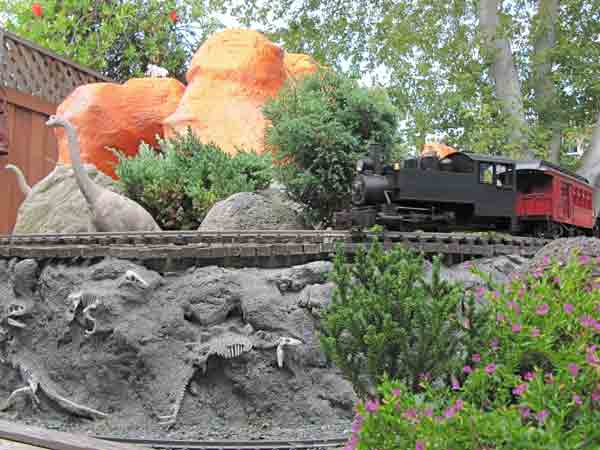
When we start out, we intend to make our dream come true. Our piqued imagination and the enthusiasm of fellow modelers are necessary to sustain us through the long construction process. Long-term and second-go-round railroad gardeners have used strong building materials for their walks, retaining walls, railroad and structures. They researched the plants to find […]
Read More…
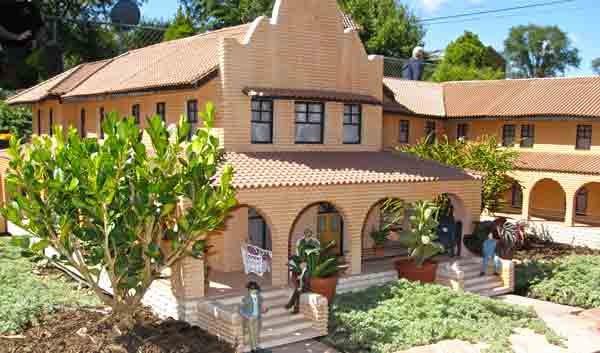
What do your buildings have to say for themselves? Each structure evokes a feeling for its purpose, the folks who might live or work there, and a bit about the history that transpired on the premises, as shown in photo 1. How the structure was built and maintained is “written on the walls.” All of […]
Read More…
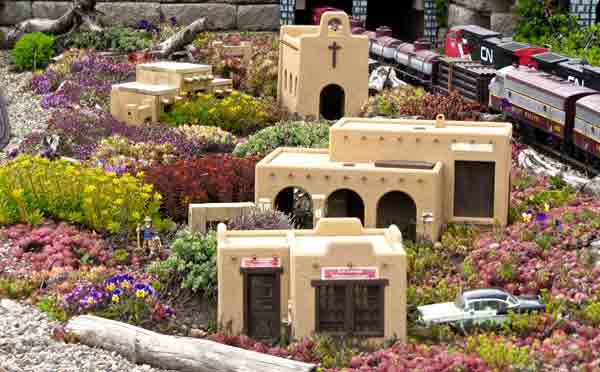
Got a brown thumb? Need low, rugged groundcover? Here’s a botanical group of succulents with more than 400 varieties—sedums. Common names include “live forever” and “stonecrop” but most gardeners call them sedum (rhymes with “can’t beat ’em”). In this column you’ll see foliage colors that range like a rainbow, from red to purple and even […]
Read More…












